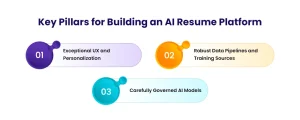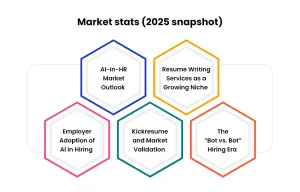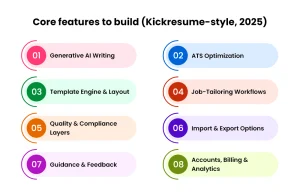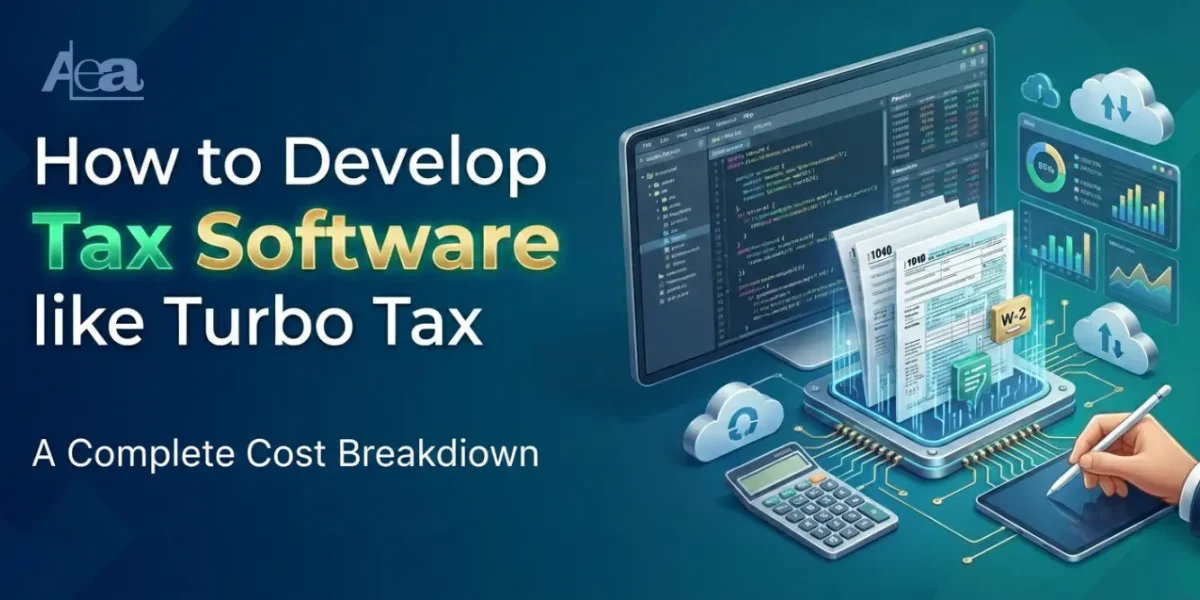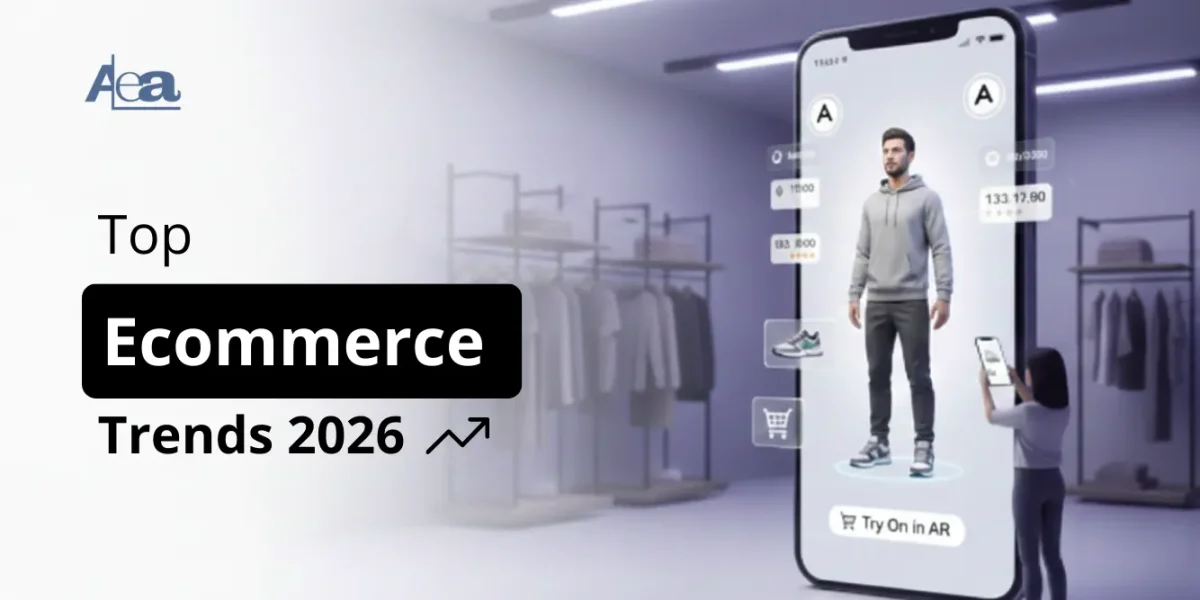Resume creation and presentation has evolved immensely in the past few years now, and when it comes to the centre of artificial intelligence, it is located in the sphere of resume creation. No more are those hours spent by the applicants in formatting documents or manually rewording their experience in each of their applications, or not finding the correct keywords.
Applications such as Kickresume have transformed the way resumes are made combining high-quality, professionally designed templates, ATS friendly formatting, so your resume actually gets past the automated scanning process, and generative AI functionality that can be used to create high impact bullet points, strong summaries, and customized versions within minutes.
Bulking up of the competition in this space awaits in 2025. Increasingly, more platforms are even providing some form of AI assistance, but what separates a temporary fad and an adequate product is the user experience, quality of its data and ethics of AI.
The crux here is, that if you seek to develop such a product, what you should not do is think of yourself like just another resume builder, but rather you have to engineer something that is self-visual as bright, dependable and something of great value and uniqueness to the user.
Artificial Intelligence Development Services are revolutionizing the way businesses function by empowering them with advanced, data-driven technologies that enhance efficiency, reduce costs, and improve customer satisfaction.
In the modern digital landscape, organizations across industries such as healthcare, finance, retail, logistics, and manufacturing are turning to AI Development Services to automate repetitive processes, analyze large volumes of data, and make more accurate, real-time decisions.
These services cover a broad range of solutions including machine learning model development, natural language processing (NLP) for chatbots and sentiment analysis, computer vision for image and video recognition, predictive analytics for forecasting, and seamless AI integration into existing enterprise systems.
Key Pillars for Building an AI Resume Platform:
1. Exceptional UX and Personalization
A resume builder is a design tool as well as a writing assistant. There should be frictionless interface, visual interface, which lets users edit layouts, change templates easily as well as preview their document in real-time.
Personalization ought to be its center AI ought to recommend differentiated to the level of the user, their career levels, industry, and the kind of job to be pursued.
Take a software engineer as an example, the bullet points listed by her would not be anything close to what a marketing executive would list, and your system should recognize the difference.
2. Robust Data Pipelines and Training Sources
Quality training data is the strength of your AI. This will require very large and wide variety of resumes, job descriptions and industry specific skills to be able to produce a near accurate context aware output.
But this is not limited to scraping the internet, you can find ethically sourced, high quality datasets by partnering with HR tech companies, career coaches, or job boards. You should also have pipelines that could constantly feed new data into the labor market to update your AI recommendations when the trends evolve.
3. Carefully Governed AI Models
There are stakes surrounding generative AI in hiring space. In case of inaccurate or misleading statements by your model, users may develop lack of credibility with recruiters. Whenever possible, have a governance system in place which requires output verification, elimination of bias, and adherence to local employment regulations.
This not only secures the users but also instills trust which is a point of key differentiation in a highly competitive AI resume building market.
Read Also: How to Develop Remote Access Software Like TeamViewer
Market stats (2025 snapshot)
The global AI-in-HR market is set to grow rapidly, projected to rise from about USD 8.16 billion in 2025 to nearly USD 30.77 billion by 2034, representing a strong ~15.94% CAGR (Precedence Research). This growth highlights how AI is becoming indispensable in workforce management, recruitment, and employee engagement.
A particularly dynamic segment is generative AI in HR, forecasted to expand from USD 648 million in 2024 to more than USD 2.8 billion by 2034, growing at almost the same pace.
Other respected analysts echo this bullish outlook; Grand View Research anticipates the market will hit USD 15.24 billion by 2030 at a 24.8% CAGR (Grand View Research), while KBV Research forecasts a value of USD 15.9 billion by 2031 (KBV Research).
Resume Writing Services as a Growing Niche
Even as HR technology scales, the resume writing and career services market has retained steady relevance. Current valuations put the global resume-writing services industry at about USD 2.5 billion in 2024, with projections pointing to consistent growth through 2033.
Analysts such as Verified Market Reports and coverage by EIN Presswire forecast the industry crossing the USD 3 billion threshold by the end of the decade proof that resumes remain central to career mobility despite the rise of LinkedIn and digital profiles.
Employer Adoption of AI in Hiring
From the employer side, AI adoption in hiring has become nearly universal. A recent survey by Insight Global found that 99% of hiring managers already use AI in some capacity, whether for resume parsing, candidate sourcing, or interview scheduling.
The benefits cited include faster time-to-hire, improved efficiency, and better job-fit alignment. Yet, employers still emphasize the need for humans in the loop, showing that while AI can screen effectively, final hiring decisions remain a deeply human judgment.
Readers can explore the evolving applications of AI in hiring through resources like Wikipedia’s overview, which captures the broader shift toward AI-driven candidate evaluation.
Kickresume and Market Validation
On the candidate-facing side, AI resume builders have already reached mainstream adoption. For instance, Kickresume, a popular AI-powered resume platform, reports having over 6 million users worldwide.
This scale demonstrates that job seekers are eager for tools that blend ATS-friendly formatting with AI-generated content suggestions.
The “Bot vs. Bot” Hiring Era
A striking trend noted by The Wall Street Journal is the emerging “bot vs. bot” dynamic: candidates increasingly rely on AI to generate optimized resumes, while employers rely on AI-driven applicant tracking systems (ATS) to filter applications.
This creates a unique arms race where resumes must not only impress human recruiters but also pass machine filters—making ATS compliance, keyword optimization, and truthful representation critical.
Academic research reinforces this; an arXiv study analyzing nearly half a million resumes found that algorithmic writing assistance increased a candidate’s likelihood of being hired by ~8%, showing the tangible impact of AI augmentation in career outcomes.
Read Also: How to Develop Human Capital Management Software
Core features to build (Kickresume-style, 2025)
The resume builder market has matured, but AI-driven personalization and compliance are opening new opportunities. To stand out, your platform must offer not only polished templates but also deep intelligence, employer-facing compatibility, and transparency safeguards. Below is an expanded breakdown of the core features you’ll need to build in 2025.
1. Generative AI Writing
At the heart of the platform lies generative AI that helps users craft resumes quickly and effectively. The system should generate:
- JD-aware summaries, bullet points, and achievements: AI should parse the job description (JD) and highlight relevant skills, achievements, and role-specific language. This ensures every resume version feels tailored rather than generic.
- Tone and style controls: Users should be able to select between concise, formal, creative, or impact-focused tones, depending on industry norms.
- Keyword injection & hallucination checks: With many resumes filtered by ATS, the AI must incorporate relevant keywords naturally. Equally important is preventing “hallucinations” false claims or skills not backed by user input. Implement grounded prompts (drawing only from user-supplied experience) and mandatory approval steps to ensure accuracy.
Why this matters: Generative AI speeds up writing but trust is everything. Giving users control over accuracy, tone, and keyword strategy builds credibility.
2. ATS Optimization
Applicant Tracking Systems (ATS) remain the first gatekeeper in hiring. The platform should integrate:
- Real-time parsability checks: Continuously validate whether resumes are ATS-readable proper headings, section order, and structured contact details.
- Skills extraction & job-fit scoring: Extract skills from both the resume and the target job post, then calculate a matching score. This gamifies optimization while helping users see where they stand.
Why this matters: With 99% of Fortune 500 firms using ATS, candidates want assurance that their resumes won’t get lost in parsing errors.
3. Template Engine & Layout
Design remains a major differentiator. Your builder should support:
- Pixel-perfect templates: Visually appealing, printer-safe, and fully responsive. Templates must meet accessibility standards (e.g., color contrast for readability).
- Responsive web editor: A drag-and-drop section editor with undo/redo, autosave, and version history.
- Cross-device continuity: Users should be able to start editing on a laptop and finish on a phone with seamless transitions.
Why this matters: Resumes
must look great both as PDFs and when parsed into ATS. A robust editor with layout flexibility gives users confidence in presentation. Job–
4. Tailoring Workflows
One of the most powerful differentiators is job-specific tailoring:
- Target job import: Users paste a JD, upload a PDF, or enter a URL, and the AI suggests resume modifications aligned with that role.
- One-click tailoring per role: Generate a customized version instantly, ready to edit.
- Multi-resume management: Users can store multiple role-specific resumes and run A/B tests to compare recruiter responses.
Why this matters: Job seekers rarely succeed with a single generic resume. AI-powered tailoring removes the time barrier.
5. Quality & Compliance Layers
Quality isn’t only about polished language—it’s also about ethical and compliant content. Build in:
- Language quality gates: Automated grammar, concision, and de-buzzwording checks.
- Bias detection: Highlight potentially biased language and recommend inclusive alternatives.
- Honesty & claim checks: Warn users if AI-generated content inflates claims beyond supplied experience, paired with a “user disclosure prompt” for transparency.
Why this matters: As the “bot vs. bot” hiring race intensifies, trust becomes critical. Ensuring truthful, bias-free resumes reduces reputational risk.
6. Import & Export Options
Flexibility in input/output boosts adoption:
- Import: Users should import from LinkedIn, older resumes, or even scrape structured work history from email/job portals.
- Export: Offer PDF and DOCX exports with guaranteed formatting integrity, along with shareable links for recruiters.
- Portfolio/Mini-site generator (optional): Enable users to turn their resume into a lightweight personal site showcasing projects, case studies, or certifications.
Why this matters: Portability ensures users don’t feel locked into your ecosystem. The mini-site option adds modern credibility.
7. Guidance & Feedback
AI should not only write resumes but also guide users to improve them:
- Recruiter-style scoring rubrics: Provide percentile benchmarks (e.g., “Your resume scores 78/100 for this role”).
- Heatmaps: Show where recruiters spend the most attention (e.g., summary vs. work history).
- Gap & impact analysis: Highlight missing role-specific skills, quantify achievements, and suggest action-oriented rewording.
- Contextual advice: Tie suggestions to career stage (entry-level, mid-level, executive) and industry.
Why this matters: Feedback transforms a passive builder into a learning tool, giving users confidence in their job hunt.
8. Accounts, Billing & Analytics
To monetize and scale, you’ll need robust account systems:
- Free tier: Limited features with watermarked resumes.
- Subscriptions: Monthly/yearly tiers with unlimited AI credits and advanced templates.
- Credits-based model: Pay-per-use for AI-generated resumes or cover letters.
- Resume performance analytics: For shared resume links, track recruiter opens, views, and clicks.
- Team/University plans: Cohort dashboards for bootcamps, colleges, or career services, offering group analytics and admin controls.
Why this matters: A flexible monetization strategy captures both individuals and institutions, creating recurring revenue streams.
Read Also: How to Develop an AI-Powered HRM Software
Top 5 AI resume builders (to benchmark)
1. Kickresume — Strong AI writer + large template library; prominent brand. Pricing page shows free tier with paid from ~$7/mo annually, and other plan options referenced in help-center articles.
2. Rezi — Known for ATS optimization and AI bullet generation; monthly plan around $29.
3. Resume.io — Long-standing builder with AI assistance; common offers include a 7-day low-cost trial that renews to a monthly/quarterly plan.
4. Enhancv — Creative templates with AI feedback and ATS scoring; paid plans typically ~$14–$25 monthly depending on term.
5. Teal — Free AI builder + job tracker; premium “Teal+” unlocks advanced analysis (commonly seen ~$29/mo).
Cost of Developing a Resume Builder Application?
| Feature/Phase | Description | Cost Estimate (USD) | Development Time |
|---|---|---|---|
| 1. Project Scope & Features | Defining the scope, core features, and design. | N/A | 1-2 weeks |
| Basic Features | – User account login/creation – Template selection – Resume editing – PDF export | $10,000 – $15,000 | 2-4 months |
| Moderate Features | – AI-powered resume suggestions – Job board integration (LinkedIn, Indeed) – Cloud storage | $25,000 – $40,000 | 4-6 months |
| Advanced Features | – Multi-language support – Customizable templates – Smart AI suggestions – Analytics | $60,000 – $100,000+ | 6-12 months |
| Front-End Development | Development of the user interface (UI/UX) for web or mobile (iOS/Android). | $15,000 – $40,000 | 2-4 months |
| Back-End Development | Server-side development for handling data, APIs, and cloud integration. | $20,000 – $50,000 | 3-6 months |
| AI/ML Integration | Implementing AI for resume suggestions, automatic formatting, and insights. | $15,000 – $40,000 | 3-6 months |
| Database Management | Setup for secure data storage (user profiles, resume data, templates). | $5,000 – $15,000 | 1-2 months |
| Cloud Hosting & Storage | Using AWS, Google Cloud, or Azure for hosting, storage, and scaling. | $3,000 – $10,000 (Annually) | N/A |
| Mobile App Development | Native (iOS/Android) or cross-platform (React Native/Flutter) development. | $25,000 – $50,000 | 3-6 months |
| App Store Fees | Fees for publishing on Google Play or Apple App Store. | $100 – $500 | One-time fee |
| Maintenance & Updates | Post-launch updates, bug fixes, and support (15-20% of development cost annually). | $5,000 – $15,000 (Yearly) | Ongoing |
| Marketing & Promotion | Digital marketing, ads, SEO optimization, and promotion strategies. | $2,000 – $10,000+ | Ongoing |
| Third-party Services/Tools | Costs for API integrations, PDF generation libraries, or cloud storage tools. | $500 – $2,000/month | Ongoing |
Cost Breakdown Based on App Complexity:
| App Complexity | Main Features | Cost Estimate (USD) | Development Time |
|---|---|---|---|
| Simple Resume Builder | – Basic resume templates – PDF export – User accounts | $10,000 – $25,000 | 2-4 months |
| Moderate Resume Builder | – AI resume suggestions – Job board integration (LinkedIn) – Cloud storage | $25,000 – $60,000 | 4-6 months |
| Advanced Resume Builder | – Multi-language support – Custom templates – Analytics – AI-driven features | $60,000 – $150,000+ | 6-12 months |
Summary of Estimated Costs (Based on Features and Scope):
| Type of App | Main Features | Development Cost | Time to Develop |
|---|---|---|---|
| Basic App | – Simple resume editing – PDF export – Template selection | $10,000 – $25,000 | 2-4 months |
| Moderate App | – AI suggestions – Job board integration – Cloud storage | $25,000 – $60,000 | 4-6 months |
| Advanced App | – AI-driven features – Multi-language support – Analytics | $60,000 – $150,000+ | 6-12 months |
-
-
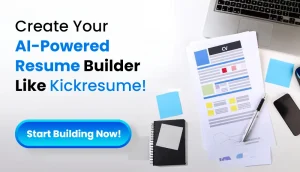
Final Thoughts
Building a Kickresume-class product in 2025 means pairing delightful UX with responsible AI. Collaborating with a trusted AI software development company ensures you start strong with an ATS-safe editor, JD-aware content generation, and honest guardrails that boost user trust.
Go beyond the basics by offering a generous free tier and a clear Pro upgrade path to attract individuals while pursuing B2B cohorts for sustainable revenue growth. With disciplined model usage, a template engine that never breaks ATS parsing, and transparent privacy practices, you can stand out in the competitive market.
An expert AI software development company can also help integrate advanced analytics, multilingual resume support, and seamless integrations with job boards, giving your platform an edge. By combining innovation with compliance and user-first design, you can compete—and win—in this rapidly growing space.”
FAQs
1. What is an AI Resume Builder?
An AI Resume Builder is a web or mobile application that uses artificial intelligence to help job seekers create professional resumes quickly. It suggests content, optimizes formatting, checks grammar, and aligns resumes with job descriptions to increase hiring chances.
2. How does an AI Resume Builder work?
These platforms leverage NLP (Natural Language Processing) and machine learning to analyze job descriptions, recommend skills and keywords, and generate personalized content. Some even integrate with LinkedIn profiles or ATS (Applicant Tracking Systems) for seamless compatibility.
3. What technologies are required to build one?
Key technologies include:
-
-
- AI & NLP frameworks (OpenAI GPT, Hugging Face, spaCy)
- Frontend development (React, Angular, or Vue.js)
- Backend stack (Node.js, Python/Django, or Ruby on Rails)
- Databases (PostgreSQL, MongoDB)
- Cloud & Hosting (AWS, Azure, or GCP)
- ATS optimization tools for recruiter-friendly resumes.
-
4. How much does it cost to develop an AI Resume Builder?
Costs vary based on features and complexity. A basic version may cost $20,000–$40,000, while a feature-rich platform with AI integrations, templates, and multi-language support could cost $70,000–$150,000+. Ongoing costs include AI model updates, hosting, and maintenance.
5. How can such a platform generate revenue?
Monetization models include:
-
-
- Freemium plans with premium features (templates, AI suggestions, cover letters).
- Subscription-based access ($10–$30/month).
- One-time resume packages.
- Affiliate hiring partnerships with job boards.
- Upselling services like interview coaching or LinkedIn profile optimization.
-
6. What makes AI resume builders like Kickresume successful?
-
-
- Intuitive drag-and-drop editors.
- Professionally designed templates.
- AI-driven personalization and keyword optimization.
- Multi-language support for global users.
- Integration with LinkedIn and ATS systems.
-
7. How can I monetize a resume builder app?
There are several ways to monetize a resume builder app:
-
Freemium Model: Offer basic features (like simple resume templates and PDF export) for free, while charging users for premium features such as additional templates, AI-powered suggestions, or customized resumes.
-
Subscription Plans: Offer monthly or yearly subscription plans that provide access to advanced features, additional templates, or enhanced AI functionalities.
-
In-App Advertising: Display relevant ads (e.g., job postings or career development services) to users who are using the free version of the app.
-
Affiliate Marketing: Partner with job boards or recruitment platforms, earning affiliate commissions when users apply for jobs through links in the app.
-
One-Time Purchases: Users can pay a one-time fee to unlock all features or purchase additional premium templates.
These methods can be mixed and matched depending on the target audience and desired revenue model.
-


